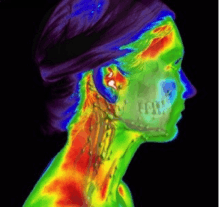Dental hygiene career options: Dental systemic thermographer
However, I then thought about my extra- and intraoral assessment skills—those “five minute” assessment skills I believed I never have enough time to perform in a routine day.
In my last article, I discussed the need I had to seek out alternative dental hygiene career options due to my diagnosis of thyroid cancer while working in traditional dental hygiene care. So what choices did I have? This article will delve a bit more deeply into the area of thermography.
READ MORE |RDH eVillage Salary Survey, Part 4: Those 'other' compensation plans, plus all 50 states in a row
As dental hygienists, we are educated and trained in science, biology, patient management, chemistry, anatomy, and much more. We take our predental hygiene courses with premed, predental, and prenursing students. Assessment is a very important dental hygiene skill and is usually overlooked at some dental hygiene “clinical” appointments. To this day, I have never forgotten my first week at dental hygiene school at Idaho State University. Our program director stood in front of our class of wide-eyed and very ignorant first-year dental hygiene students and stated that anyone can be trained to “clean teeth,” but the school was going to educate us as to “why” you are performing the necessary preventive and therapeutic procedures.
My program director went on to explain the importance of the oral-systemic link, and also the importance of that first five minutes of appointment time. This is when dental hygienists perform the extra- and intraoral assessment for diseases, both oral and systemic. One of my greatest dental hygiene joys came about as I was literally helping to save a life. I encouraged a 60-year-old male patient to see his physician due to findings of my assessment. This patient later informed me that his physician diagnosed a “prestroke” condition, which was treatable in its early stages.
At the time of my thyroid cancer news, I thought that I had only one choice and one set of skills. What is my second dental hygiene career choice? It is concentrating on assessment part of the appointment, including an intra- and extraoral examination, which should be conducted on every dental hygiene patient.
READ MORE | Dental hygiene career options: Are there alternatives to traditional dental hygiene practice?
Dental systemic thermography (DST) is an emerging science using the beginning part of the appointment time to produce a visual and written assessment report. These DST reports help to bridge the gap between the dental and medical communities using visual and written report documentation to allow for better collaboration.
Part of the American Dental Hygienists’ Association (ADHA) Standards for Clinical Dental Hygiene Practice and Process of Care is assessment: “Assessment is the systematic collection, analysis and documentation of the oral and general health status and patient needs.” (1) As a DST, that is exactly what I do.
As a DST, I now have the time to perform a thorough extra-intra oral assessment examination and report. I pre-screen the patient and look for signs of inflammation and infection in their early stages. Using visual and written equipment and software I produce a DST Report, with an oral-systemic inflammation score calculation. This DST report information helps the various providers, dental and medical, to collaborate in a concrete manner. In my next article, I will discuss your career income options as a DST.
This article originally appeared in RDH eVillage Focus, a newsletter prepared for dental professionals looking for hard-hitting, current information. You can subscribe here.
References
1. ADHA. Standards for Clinical Dental Hygiene Practice, page 6. ADHA website. http://www.adha.org/resources-docs/7261_Standards_Clinical_Practice.pdf. Updated September 2014. Accessed December 2, 2015.



